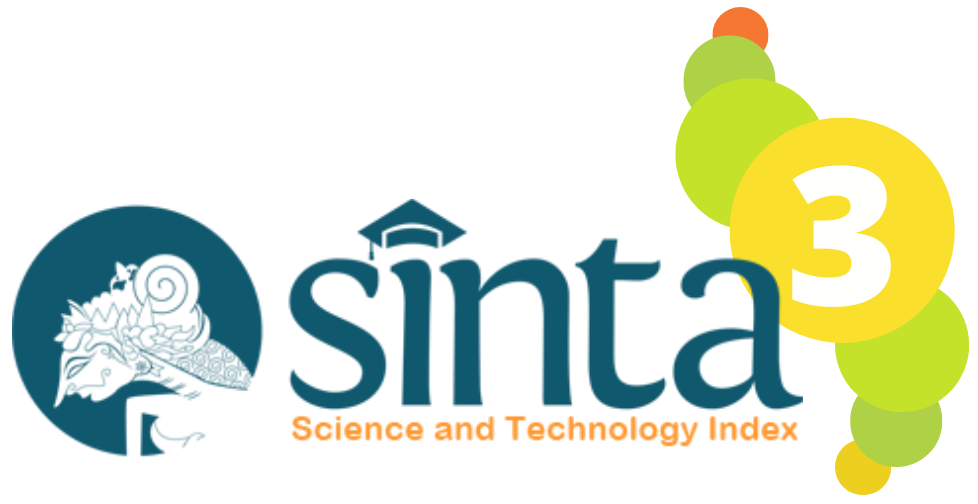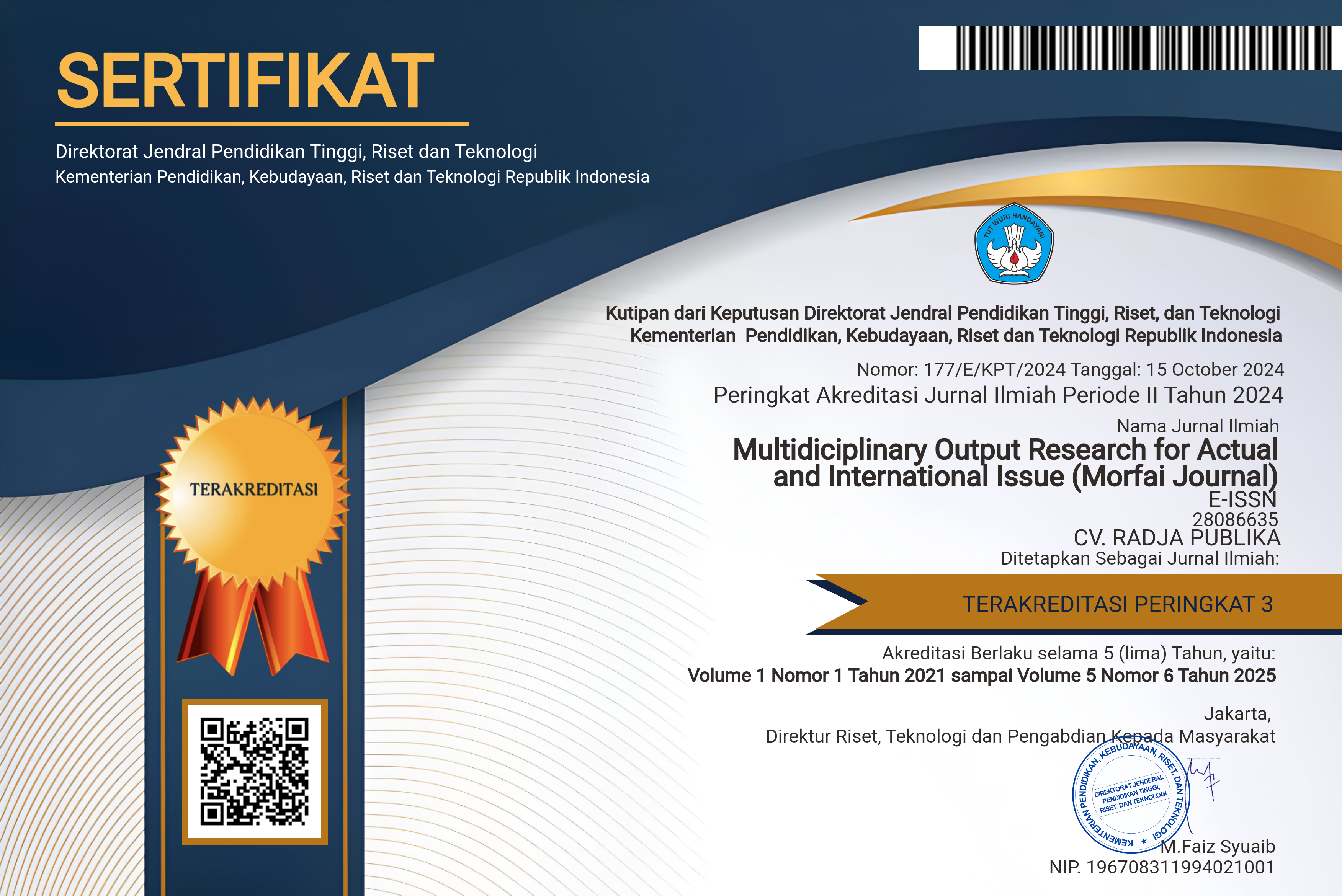THE EFFECTIVENESS OF USING ANIMATION MEDIA IN RESPIRATORY SYSTEM LEARNING IN CLASS VIII OF SMPIT ROBBANI RANTAUPRAPAT
DOI:
10.54443/morfai.v5i2.2792Published:
2025-04-20Downloads
Abstract
Learning is a process of interaction between students, educators, and learning resources in an educational environment to achieve certain goals. This study aims to examine the effect of using animation media in learning the respiratory system on the completeness of learning outcomes of class VIII students of SMPIT Robbani Rantauprapat. This study uses an experimental design by comparing two groups, namely the experimental class using animation media and the control class using conventional methods. The purpose of this study was to determine the effectiveness of animation media in improving student understanding and to compare student learning outcomes between the two methods. The results showed that the completion of student learning outcomes in the experimental class using animation media reached 94.28%, while in the control class it only reached 42.85%. The discussion of these results indicates that animation media can significantly improve student understanding compared to traditional lecture methods. In conclusion, the use of animation media in learning the respiratory system is very effective in improving the completion of student learning outcomes. This study suggests the use of animation media as an interesting and effective learning alternative.
Keywords:
Animation Media; Learning; Purpose Sumpling.References
. PIP Awal And HM Kejayaan, “Biology Education Study Program, Faculty of Islamic Education and Teacher Training, State Islamic University of North Sumatra, Medan,” Academia.Edu, Vol. 12, No. 2, Pp. 2403–2415, 2024, [Online]. Available: Https://Www.Academia.Edu/Download/109870620/Islamic_Civilization_From_Early_Growth_to_The_Mass_of_Jackson1.Pdf
. 3, No. 3, Pp. 208–213, 2023, Doi: 10.52005/Abdinusa.V3i3.197.
. AS Wahyuni And UP Ganesha, “Journal of Mathematics and Natural Sciences Education,” Vol. 12, Pp. 118–126, 2022.
. D. Yuliana Sinaga. (2022). The Effect Of Ralistic Mathematics Learning Model And Project-Based Learning Model On Problem Solving Ability And Motivation Of Students In Class V Private Elementary School Markus Medan Helvetia. International Journal of Educational Research &Amp; Social Sciences, 3(2), 590–600.https://doi.org/10.51601/ijersc.v3i2.268.
. S. Aisyah, K. Arisanti, and FA Yaqin, “Adaptation and Innovation of Elementary Madrasahs in Welcoming the Independent Learning Curriculum,” J. Educ. Fkip Unma, Vol. 9, No. 1, Pp. 386–393, 2023, Doi: 10.31949/Educatio.V9i1.4583.
. W. Somayana, “Improving Student Learning Outcomes Through the Pakem Method,” J. Educator. Indones., Vol. 1, No. 03, Pp. 283–294, 2020, Doi: 10.59141/Japendi.V1i03.33.
. M. Di and K. Merdeka, “Differentiated Learning in Mathematics Learning in the Merdeka Curriculum,” Vol. 3, No. 3, Pp. 636–646, 2022.
. Mutiara Cipta, D. ., & Alvin, S. (2023). Safeguarding Personal Information: Communication Privacy Management By Gen-Z Influencers. International Journal of Educational Research &Amp; Social Sciences, 4(3), 465–471.https://doi.org/10.51601/ijersc.v4i3.653.
. Mohammad Solekhan, Kunarto, & Mahmuda Pancawisma Febriharini. (2022). Forest and Land Fire Management Strategies: Prevention and Law Enforcement. International Journal of Educational Research &Amp; Social Sciences, 3(2), 567–580.https://doi.org/10.51601/ijersc.v3i2.306.
. A. Lailan, “The Role of Educational Technology in Learning,” Sentri J. Ris. Ilm., Vol. 3, No. 7, Pp. 3257–3262, 2024, Doi: 10.55681/Sentri.V3i7.3115.
. AP Wulandari, AA Salsabila, K. Cahyani, And T. Shofiah, “The Importance of Learning Media in the Teaching and Learning Process,” Vol. 05, No. 02, Pp. 3928–3936, 2023.
. WA Nisa And A. Sulistyawati, “Development of Computer-Based Learning System at Sman 2 Negeri Katon,” Vol. 4, No. 1, Pp. 49–53, 2023.
. EV Farsyofmi And A. Wirman, “A Pseudo-Experiment of Modified Dragon Snake Game on Children’s Writing Ability in Kindergarten,” Vol. 04, No. 01, 2024.
. N. Mardiah And M. Alpusari, “The Influence Of Card Sort Learning Strategies On Students' Science Learning Outcomes (Quasi-Experimental Study Of Fifth Grade Elementary School Student It Milatul Khoir Pekanbaru),” Pp. 726–737, 2024, Doi: 10.62567/Micjo.V1i2.63.
License
Copyright (c) 2025 Marliana, Rahmi Nazliah, Rosmidah Hasibuan

This work is licensed under a Creative Commons Attribution 4.0 International License.











